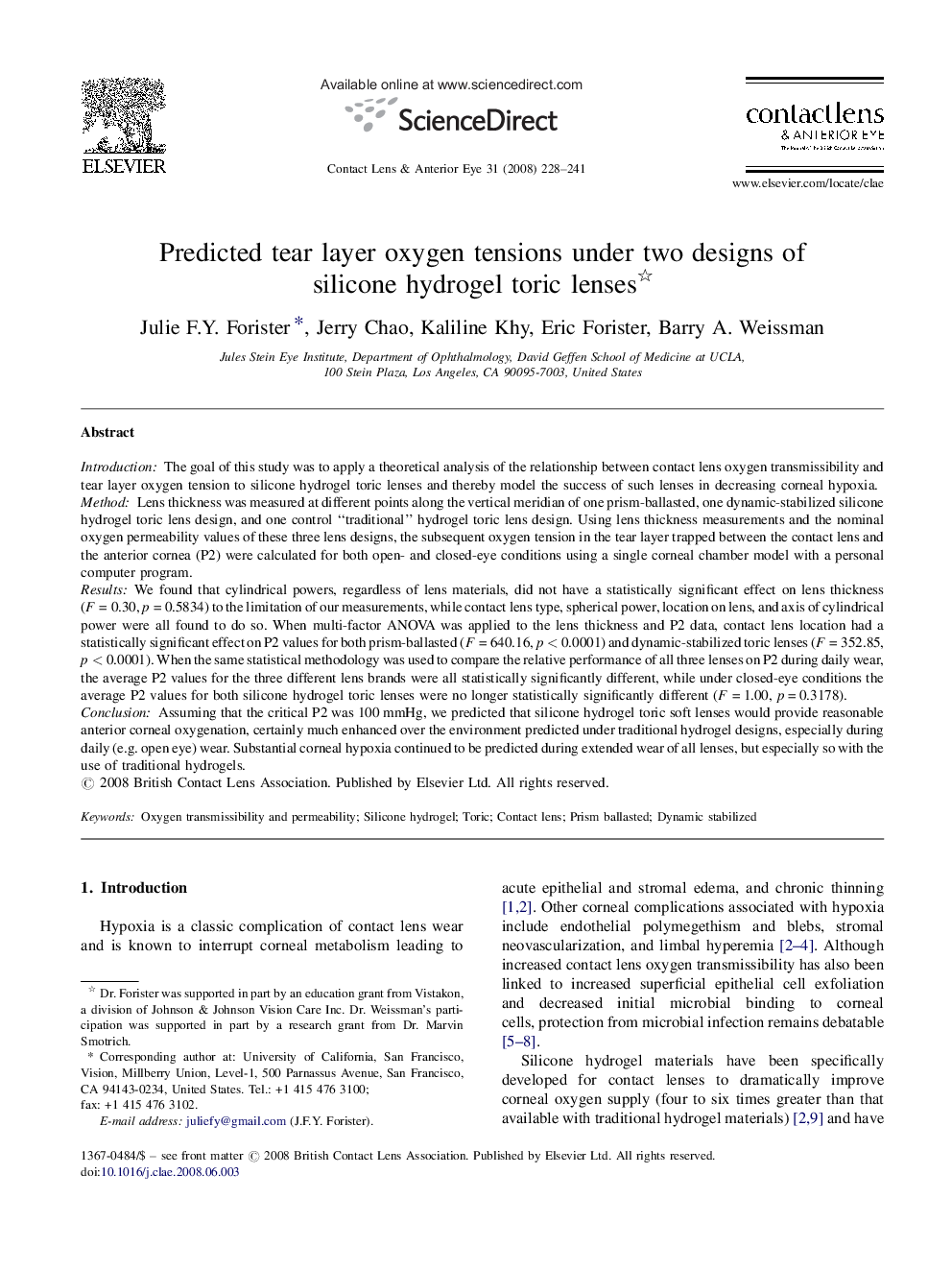| Article ID | Journal | Published Year | Pages | File Type |
|---|---|---|---|---|
| 2693441 | Contact Lens and Anterior Eye | 2008 | 14 Pages |
IntroductionThe goal of this study was to apply a theoretical analysis of the relationship between contact lens oxygen transmissibility and tear layer oxygen tension to silicone hydrogel toric lenses and thereby model the success of such lenses in decreasing corneal hypoxia.MethodLens thickness was measured at different points along the vertical meridian of one prism-ballasted, one dynamic-stabilized silicone hydrogel toric lens design, and one control “traditional” hydrogel toric lens design. Using lens thickness measurements and the nominal oxygen permeability values of these three lens designs, the subsequent oxygen tension in the tear layer trapped between the contact lens and the anterior cornea (P2) were calculated for both open- and closed-eye conditions using a single corneal chamber model with a personal computer program.ResultsWe found that cylindrical powers, regardless of lens materials, did not have a statistically significant effect on lens thickness (F = 0.30, p = 0.5834) to the limitation of our measurements, while contact lens type, spherical power, location on lens, and axis of cylindrical power were all found to do so. When multi-factor ANOVA was applied to the lens thickness and P2 data, contact lens location had a statistically significant effect on P2 values for both prism-ballasted (F = 640.16, p < 0.0001) and dynamic-stabilized toric lenses (F = 352.85, p < 0.0001). When the same statistical methodology was used to compare the relative performance of all three lenses on P2 during daily wear, the average P2 values for the three different lens brands were all statistically significantly different, while under closed-eye conditions the average P2 values for both silicone hydrogel toric lenses were no longer statistically significantly different (F = 1.00, p = 0.3178).ConclusionAssuming that the critical P2 was 100 mmHg, we predicted that silicone hydrogel toric soft lenses would provide reasonable anterior corneal oxygenation, certainly much enhanced over the environment predicted under traditional hydrogel designs, especially during daily (e.g. open eye) wear. Substantial corneal hypoxia continued to be predicted during extended wear of all lenses, but especially so with the use of traditional hydrogels.
